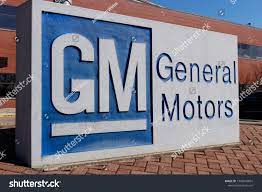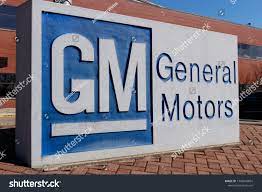
One of the two primary profit generators for the Detroit automaker and its top sales market for more than ten years, China, is losing ground to competitors.
It fell below 10% for the first time since 2004 when the company's market share in the nation, including its joint ventures, fell from about 15% in 2015 to 9.8% last year. Since peaking in 2014, its operational earnings have also decreased by almost 70%.
A portion of the blame lies with the coronavirus pandemic, which started in China. The declines, however, began years before the global health crisis and are becoming more complicated as economic and political tensions between the United States and China rise.
A generational shift in consumer perceptions of the auto industry and electric vehicles, as well as growing competition from government-backed domestic automakers, are other factors.
Will Sundin, a 34-year-old science instructor who also reviews cars on YouTube, has extensive knowledge of the Chinese automotive market. Over models from rival Chinese automakers Xpeng, Li Auto, and IM Motors, he chose the Nio. He claimed that because the car could replace the battery rather than recharge, it "put it ahead pretty quickly."
Not a consideration on his list? American brands like GM's Cadillac and Buick were initially the driving force behind the automaker's expansion in China.
“Cadillac has a good image in China, but it’s expensive,” said Sundin, who previously owned a 2012 Ford Focus. “I think the problem they face is that they have competition, new competition, a lot of new competition, from different directions that they weren’t expecting.”
For GM, whose Chinese business has experienced such problems, this competition is becoming a bigger issue. Other than the promise of new EVs and a new business unit called The Durant Guild that will import expensive vehicles with high margins from the U.S. to China, the company hasn't provided much assurance about how to buck the trend.
While many American brands are struggling in China, GM's decline stands out. For instance, GM's operations in the nation are much larger than those of Ford Motor, its crosstown rival. It also has a much smaller global footprint after closing operations in other regions and selling its European operations to concentrate mainly on North America, China, and to a lesser extent, South America.
It can be dangerous to rely too heavily on a small number of markets. However, it has helped GM achieve record earnings as the company, led by CEO Mary Barra, has eliminated underperforming operations. Although experts say it would be more difficult for GM to expand globally with electric vehicles than it would be for China to recover in the coming years, there may be new opportunities for the company to do so.
“With the changes that they put in place, with a refocus on North America and China, the pull out of Europe, essentially, that does create a risky scenario now that you have some issues, multiple issues, going on in the Chinese market,” said Jeff Schuster, executive vice president of LMC Automotive, a GlobalData company.
Minimizing output In recent quarters, GM has been downplaying the importance of its operations in China. CFO Paul Jacobson stated that China's impact on GM's financial performance was "not decisive" when discussing earnings in October.
In December, Barra stated that although China is a significant portion of GM's business, the company also pays attention to other issues, such as the government's now-gone "zero Covid" policy and recent protests.
“We still see opportunity there ... obviously, we also watch the geopolitical situation. We can’t operate in a vacuum,” she said during an Automotive Press Association meeting. “But we continue to see opportunity there and we’ll continue to evaluate the situation, but our plans are to be in a leadership position in EVs.”
The Wuling Hongguang Mini, produced by a joint venture and the best-selling EV on the market, has been a bright spot for GM in China. The economy vehicle has sold more than 1 million units since going on sale in the middle of 2020.
However, Jacobson claimed earlier this year that the nearly 40% decline in equity income for the operations in 2022 was due to China's response to the coronavirus pandemic and the sharp increase in Covid cases.
With the exception of Tesla, which was granted an exemption, China requires joint ventures for non-Chinese automakers, so GM reports its earnings from there as equity income. Ten joint ventures, two wholly foreign-owned businesses, and more than 58,000 employees work for GM in China. Cadillac, Buick, Chevrolet, Wuling, and Baojun are some of its brands.
“We see a lot of Covid cases in China right now that slowed down the consumer. So we expect it’ll be a little bit of a slow buildup but hopefully, working its way back up to levels that we’re used to over time,” he told reporters on Jan. 31 during an earnings call.
(Source:www.besmart.com)
It fell below 10% for the first time since 2004 when the company's market share in the nation, including its joint ventures, fell from about 15% in 2015 to 9.8% last year. Since peaking in 2014, its operational earnings have also decreased by almost 70%.
A portion of the blame lies with the coronavirus pandemic, which started in China. The declines, however, began years before the global health crisis and are becoming more complicated as economic and political tensions between the United States and China rise.
A generational shift in consumer perceptions of the auto industry and electric vehicles, as well as growing competition from government-backed domestic automakers, are other factors.
Will Sundin, a 34-year-old science instructor who also reviews cars on YouTube, has extensive knowledge of the Chinese automotive market. Over models from rival Chinese automakers Xpeng, Li Auto, and IM Motors, he chose the Nio. He claimed that because the car could replace the battery rather than recharge, it "put it ahead pretty quickly."
Not a consideration on his list? American brands like GM's Cadillac and Buick were initially the driving force behind the automaker's expansion in China.
“Cadillac has a good image in China, but it’s expensive,” said Sundin, who previously owned a 2012 Ford Focus. “I think the problem they face is that they have competition, new competition, a lot of new competition, from different directions that they weren’t expecting.”
For GM, whose Chinese business has experienced such problems, this competition is becoming a bigger issue. Other than the promise of new EVs and a new business unit called The Durant Guild that will import expensive vehicles with high margins from the U.S. to China, the company hasn't provided much assurance about how to buck the trend.
While many American brands are struggling in China, GM's decline stands out. For instance, GM's operations in the nation are much larger than those of Ford Motor, its crosstown rival. It also has a much smaller global footprint after closing operations in other regions and selling its European operations to concentrate mainly on North America, China, and to a lesser extent, South America.
It can be dangerous to rely too heavily on a small number of markets. However, it has helped GM achieve record earnings as the company, led by CEO Mary Barra, has eliminated underperforming operations. Although experts say it would be more difficult for GM to expand globally with electric vehicles than it would be for China to recover in the coming years, there may be new opportunities for the company to do so.
“With the changes that they put in place, with a refocus on North America and China, the pull out of Europe, essentially, that does create a risky scenario now that you have some issues, multiple issues, going on in the Chinese market,” said Jeff Schuster, executive vice president of LMC Automotive, a GlobalData company.
Minimizing output In recent quarters, GM has been downplaying the importance of its operations in China. CFO Paul Jacobson stated that China's impact on GM's financial performance was "not decisive" when discussing earnings in October.
In December, Barra stated that although China is a significant portion of GM's business, the company also pays attention to other issues, such as the government's now-gone "zero Covid" policy and recent protests.
“We still see opportunity there ... obviously, we also watch the geopolitical situation. We can’t operate in a vacuum,” she said during an Automotive Press Association meeting. “But we continue to see opportunity there and we’ll continue to evaluate the situation, but our plans are to be in a leadership position in EVs.”
The Wuling Hongguang Mini, produced by a joint venture and the best-selling EV on the market, has been a bright spot for GM in China. The economy vehicle has sold more than 1 million units since going on sale in the middle of 2020.
However, Jacobson claimed earlier this year that the nearly 40% decline in equity income for the operations in 2022 was due to China's response to the coronavirus pandemic and the sharp increase in Covid cases.
With the exception of Tesla, which was granted an exemption, China requires joint ventures for non-Chinese automakers, so GM reports its earnings from there as equity income. Ten joint ventures, two wholly foreign-owned businesses, and more than 58,000 employees work for GM in China. Cadillac, Buick, Chevrolet, Wuling, and Baojun are some of its brands.
“We see a lot of Covid cases in China right now that slowed down the consumer. So we expect it’ll be a little bit of a slow buildup but hopefully, working its way back up to levels that we’re used to over time,” he told reporters on Jan. 31 during an earnings call.
(Source:www.besmart.com)





